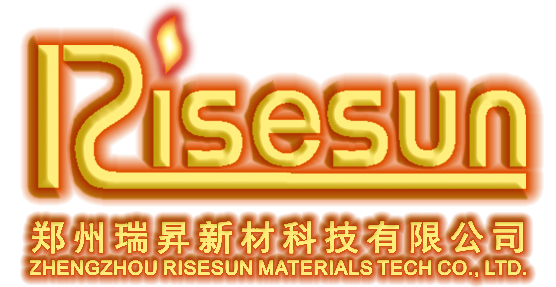01
2025
-
05
Understanding SIC Heaters: A Comprehensive Guide to Their Applications and Benefits
Silicon carbide (SiC) heaters, commonly referred to as SIC heaters, represent a significant advancement in heating technology within the electrical and thermal equipment sector. They are renowned for their exceptional thermal conductivity, efficiency, and durability, making them an ideal choice in various industrial applications. One of the standout features of SIC heaters is their ability to with
Silicon carbide (SiC) heaters, commonly referred to as SIC heaters, represent a significant advancement in heating technology within the electrical and thermal equipment sector. They are renowned for their exceptional thermal conductivity, efficiency, and durability, making them an ideal choice in various industrial applications.
One of the standout features of SIC heaters is their ability to withstand high temperatures. Typically, these heaters can operate at temperatures exceeding 1600°C (2912°F) without degradation, which is crucial for industries that require stable and potent heating solutions. This high-temperature capability is particularly beneficial in sectors such as metallurgy, ceramics, and semiconductor manufacturing, where precise and consistent heating is paramount.
Moreover, SIC heaters offer excellent energy efficiency. They have a rapid heating response time and low thermal mass, enabling them to reach operational temperatures quickly while conserving energy. This efficiency not only reduces operational costs but also minimizes environmental impact by lowering energy consumption.
The construction of SIC heaters contributes to their longevity and reliability. Unlike traditional heating elements made from materials prone to oxidation or corrosion, SIC heaters are highly resistant to chemical attack and thermal shock. This resilience means that they can operate in harsh environments without the frequent need for replacement, thus providing a cost-effective solution over time.
SIC heaters are also known for their uniform heating capabilities. The design of these heaters allows for consistent heat distribution across the surface area, thereby reducing hot spots and ensuring uniform performance throughout the heating process. This characteristic is essential in applications where temperature uniformity is vital, such as in sintering and annealing processes.
In terms of applications, SIC heaters are versatile. They are widely used in high-temperature furnaces, industrial ovens, and as infrared heating sources. Additionally, they find utility in the production of LEDs and other semiconductor devices, where precise temperatures are necessary for optimal performance and yield.
Furthermore, the ability to customize SIC heater designs to fit specific requirements enhances their appeal. Manufacturers can tailor the size, shape, and power ratings of these heaters to meet the unique needs of various industrial processes, making them adaptable to a wide array of applications.
In summary, SIC heaters represent a cutting-edge solution in the realm of heating technology. Their high-temperature capabilities, energy efficiency, durability, and versatility make them an excellent choice for a variety of industrial applications. As industries continue to evolve and demand more efficient heating solutions, the significance of SIC heaters is likely to grow, solidifying their place within the electrical and thermal equipment landscape.
One of the standout features of SIC heaters is their ability to withstand high temperatures. Typically, these heaters can operate at temperatures exceeding 1600°C (2912°F) without degradation, which is crucial for industries that require stable and potent heating solutions. This high-temperature capability is particularly beneficial in sectors such as metallurgy, ceramics, and semiconductor manufacturing, where precise and consistent heating is paramount.
Moreover, SIC heaters offer excellent energy efficiency. They have a rapid heating response time and low thermal mass, enabling them to reach operational temperatures quickly while conserving energy. This efficiency not only reduces operational costs but also minimizes environmental impact by lowering energy consumption.
The construction of SIC heaters contributes to their longevity and reliability. Unlike traditional heating elements made from materials prone to oxidation or corrosion, SIC heaters are highly resistant to chemical attack and thermal shock. This resilience means that they can operate in harsh environments without the frequent need for replacement, thus providing a cost-effective solution over time.
SIC heaters are also known for their uniform heating capabilities. The design of these heaters allows for consistent heat distribution across the surface area, thereby reducing hot spots and ensuring uniform performance throughout the heating process. This characteristic is essential in applications where temperature uniformity is vital, such as in sintering and annealing processes.
In terms of applications, SIC heaters are versatile. They are widely used in high-temperature furnaces, industrial ovens, and as infrared heating sources. Additionally, they find utility in the production of LEDs and other semiconductor devices, where precise temperatures are necessary for optimal performance and yield.
Furthermore, the ability to customize SIC heater designs to fit specific requirements enhances their appeal. Manufacturers can tailor the size, shape, and power ratings of these heaters to meet the unique needs of various industrial processes, making them adaptable to a wide array of applications.
In summary, SIC heaters represent a cutting-edge solution in the realm of heating technology. Their high-temperature capabilities, energy efficiency, durability, and versatility make them an excellent choice for a variety of industrial applications. As industries continue to evolve and demand more efficient heating solutions, the significance of SIC heaters is likely to grow, solidifying their place within the electrical and thermal equipment landscape.



